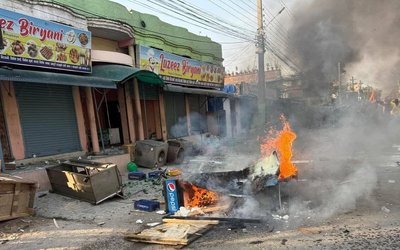More on News





In August 1996, I joined Lokmanya Tilak Municipal General Hospital (LTMGH) in Mumbai, India, as aninternist–house officer. The LTMGH is well-known for handling medical crises, because it is the largest public hospital in Mumbai Suburban District and is located near Asia’s largest slum, Dharavi. Initially, I had a difficult time managing the huge workload. One of the central tasks of the housestaff was to discharge as many patients as possible onpreemergency days to make room for the many anticipated admissions on call days.The housestaff who kept their ward census in single digits were most valued.
Those who failed to do this invited reproach from the registrars.
One day, the hospital admitted a middle-aged worker with fever, who responded to antimalarial treatment and was soon fit to go home. In the morning of the preemergency day, I filled out his discharge forms and instructed the nurse to discharge him. However, during my evening rounds, I found him still sitting on the hospital bed. He said he was waiting for his ride. I was annoyed, especially because of the anticipated reaction from my registrar. I told the patient that he had been discharged and should leave. I admit I was quite rude to him. The poor man did not argue. I left to attend to other patients, completed my evening rounds, and began to see the new admissions.
Then I witnessed something unforgettable. While the discharged patient sat on his hospital bed, his two small children quietly hid beneath the bed and shared a lipsmacking meal—the hospital food meant for their father.
It was obvious from their faces that these children seldom enjoyed such nutritious food. Soon after, the gentleman went home with a satisfied heart and his children with full stomachs.
My heart sank. I was stunned to see that this poor man had overstayed his visit just to feed his children on a day that he could not earn his daily wages because of hospitalization.
Had he done this throughout his hospital stay? I wondered.
That day I learned a lesson not found in Harrison’s Principles of Internal Medicine—that I was fighting not malaria or any other disease, but the deadliest affliction known to humankind: poverty.
Now, years later, I walk the well-appointed, air-conditioned corridors of P.D. Hinduja National Hospital in Mumbai, India—a privately run, state-of-the-art facility located just 3 miles from LTMGH. But I am reminded still of poverty—for example, when our kidney transplant recipients stop taking immunosuppression or when patients with end-stage renal disease stop dialysis because of exhausted financial resources. It is a bitter fact that many patients in India prefer to receive inadequate treatment or even stop treatment and die rather than sell their property and burden their family, even when they have a treatable disease.
Now I understand the meaning of the words of wisdom told by my mentor, Dr. Bharat Shah: “What is adequate [treatment] is not practical, so what is practical has to be adequate.” As I think back to 1996 and remember the poor man and his two hungry children, I wonder: Do the best practice guidelines and treatment recommendations published in renowned journals really apply to our poor patients?
The article first appeared in a medical journal, Annals of Internal Medicine in 2005,





